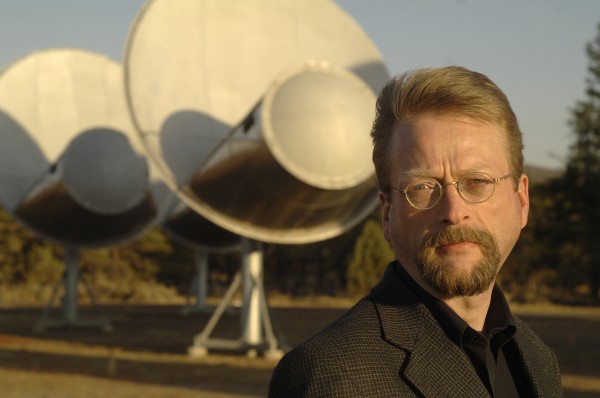
Lecture by Doug Vakoch: “Aesthetics for Aliens: Art, Music, and Extraterrestrials”
75 Russell Street
Lewiston, ME 04240

Doug Vakoch
Do aliens have a sense of beauty? Could they understand ours? From Johannes Kepler’s Music of the Spheres to Hollywood’s alien symphony in Close Encounters of the Third Kind, we have pondered the link between the cosmos and creativity. Today scientists leading the Search for Extraterrestrial Intelligence (SETI) point their telescopes toward the stars, seeking evidence of civilizations beyond Earth. If they find a signal from aliens, what should we say in reply? How could we let them know what it’s like to be human? Building on the language of mathematics and science, SETI researcher Dr. Douglas Vakoch shows how we might start telling extraterrestrials about aesthetics on Earth at a lecture at 6 p.m. on Saturday, November 3. The lecture is sponsored by the Department of Anthropology and the Museum of Art, in association with the groundbreaking exhibition, Starstruck: The Fine Art of Astrophotography, on view through December 15, in Olin Arts Center room 104. Light refreshments will be served in the Museum following the lecture.
Douglas Vakoch is the Director of Interstellar Message Composition at the SETI Institute, as well as Professor of Clinical Psychology at the California Institute of Integral Studies. He leads the SETI Institute’s project to compose interstellar messages of the kind that may someday be sent in reply to a signal from extraterrestrials. Dr. Vakoch is Chair of the International Academy of Astronautics’ Study Groups on Interstellar Message Construction and Active SETI. As a member of the International Institute of Space Law, he examines policy issues related to interstellar communication. Dr. Vakoch has published widely in scholarly books and journals in psychology, astronautics, and the relationship between the arts and sciences. His work has been featured in newspapers and magazines such as the New York Times, Nature, Science, and Der Spiegel. As a spokesman on the cultural aspects of SETI, he has been interviewed on radio and television shows on the BBC, NPR, ABC, The Learning Channel, The Discovery Channel, and many others. Hi recent books include Communication with Extraterrestrial Intelligence (CETI); Civilizations Beyond Earth: Extraterrestrial Life and Society; Psychology of Space Exploration: Contemporary Research in Historical Perspective; Ecofeminism and Rhetoric: Critical Perspectives on Sex, Technology, and Discourse; and Feminist Ecocriticism: Environment, Women, and Literature.
“Astronomers have been searching for intelligent life around other stars for over a half century,” says Vakoch. “But today’s searches are trillions of times more powerful than the first ones. With recent advances in technology, if intelligent life is out there, we could find it tomorrow.” And, if we find ET, we have serious decisions to make, ones Vakoch describes as “some of the most critical questions humankind has ever pondered. “ He continues, “Should we reply? If so, what should we say? How do tell an extraterrestrial what it’s like to be human? The differences between humans and extraterrestrials would be tremendous. With all the challenges we face in making ourselves understood at interstellar distances, is it even possible to communicate, for example, our sense of beauty?”
Vakoch’s talk is one in the Cosmic Questions series of lectures associatedwith Starstruck. “When one encounters the images in Starstruck and begins thinking about the scales of space and time involved,” says Anthony Shostak, Curator of Education for the Museum of Art and organizer of Starstruck, “one inevitably starts thinking about some of the greatest questions. Our Cosmic Questions series brings some interesting people to our community to help us engage with these.”
Starstruck is an ideal exhibition for teachers in all levels of education to engage with art related to a variety of subjects including astronomy and physical science, history, geography, literature, religion, and math. Group tours are welcome by appointment: (207) 786-8302.
The Bates College Museum of Art is open free to the public Mondays through Saturdays 10-5, and Wednesday evenings September through May until 9 p.m. For directions and more information about events, please visit bates.edu/museum/.